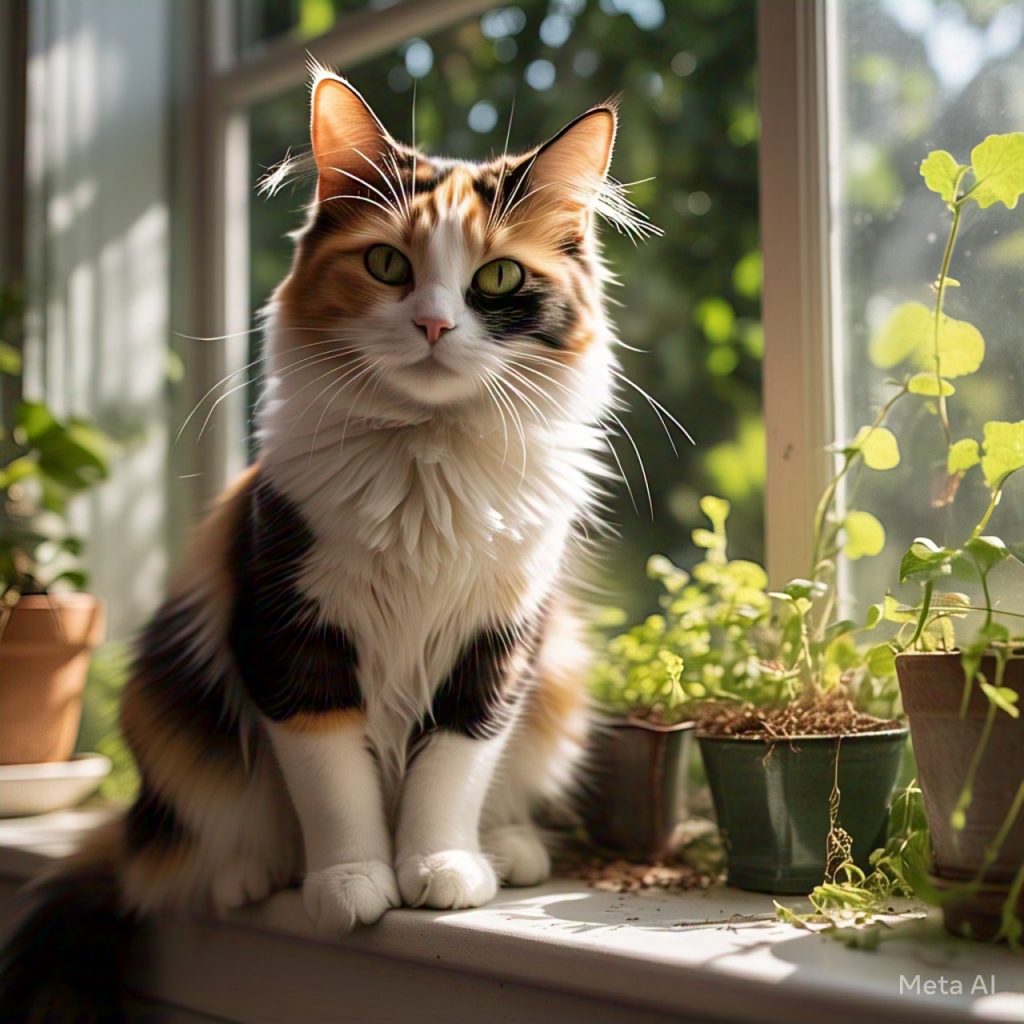Calico cats are among the most visually captivating felines, boasting a blend of vibrant colors like orange, black, and white. But beyond their striking appearance lies a rich history steeped in mythology, cultural significance, and genetic marvels. This comprehensive guide explores the intriguing origins and historical significance of calico cats, shedding light on their journey from ancient civilizations to their current status as beloved pets.
Origins of the Calico Cat: A Genetic Masterpiece
Understanding the Genetics of Calico Cats
Calico cats are not a breed but a color pattern characterized by a tri-color coat. The unique coloring results from a genetic phenomenon known as X-chromosome inactivation, which primarily occurs in female cats. This genetic trait leads to their patchwork of colors, making them one of the most easily recognizable feline types.
Why Are Almost All Calico Cats Female?
The answer lies in the sex chromosomes. Female cats have two X chromosomes (XX), while males have one X and one Y (XY). The genes responsible for black and orange fur are located on the X chromosome. For a cat to display both colors, it needs two X chromosomes, explaining why nearly all calico cats are female. Male calicos are rare, typically resulting from a genetic anomaly called Klinefelter syndrome (XXY), and are often sterile.
Historical Significance of Calico Cats
Calico Cats in Ancient Cultures
- Egypt: In ancient Egypt, cats were revered, and their unique coat patterns were seen as manifestations of the divine. Calico cats were believed to bring good fortune and were often depicted in art and sculptures.
- Japan: Known as “mi-ke” (meaning “triple fur”) in Japan, calico cats are considered lucky charms. The famous Maneki Neko, or “beckoning cat” figurine, is often portrayed as a calico, symbolizing prosperity and protection. Sailors would bring calico cats on voyages to ward off bad luck and ensure a safe journey.
European Legends and Folklore
In Europe, calico cats were often associated with mystical properties.
- Ireland: Irish folklore suggests that rubbing a calico cat’s tail on a wart during the month of May can cure it, emphasizing their mystical healing powers.
- France: French fishermen believed that calico cats could protect their boats from storms and misfortune, leading many to keep them aboard their vessels.
The Journey of Calico Cats to America
Calico cats made their way to America aboard trading ships, likely brought over by European settlers who valued their reputation for good luck. In colonial times, they were cherished for their rat-catching abilities and became common fixtures in households and barns across the new colonies.
Recognition in American Culture
- State Symbol: The calico cat was named the official state cat of Maryland in 2001 due to its resemblance to the state’s black, orange, and white oriole bird.
- Popular Media: Calicos have also found their way into literature, art, and cinema, often symbolizing independence, mystery, and charm.
The Role of Calico Cats in Modern Breeding
Since calico is a color pattern rather than a breed, it can appear in various breeds, including:
- Persian: Known for their long, luxurious fur and calm demeanor.
- Maine Coon: Recognized for their large size and friendly nature.
- American Shorthair: Valued for their easy-going personality and sleek coat.
Breeders have capitalized on the calico’s popularity by selectively breeding for these vibrant color patterns while maintaining the desirable traits of specific breeds.
Calico Cats in Art and Literature
Calico cats have inspired artists and writers for centuries, symbolizing beauty, luck, and mystery. From traditional Japanese art to contemporary literature, they are often portrayed as wise, independent, and resilient creatures. Their vivid coats make them natural muses for creative expression.
Are Calico Cats Really Lucky? The Myths and Realities
The notion of calico cats as harbingers of good luck persists across cultures.
- In Business: Maneki Neko figurines are often placed in stores and restaurants to attract customers and prosperity.
- In Households: Many believe that owning a calico cat can bring financial fortune and ward off negative energy.
While these beliefs are rooted in folklore rather than fact, they add to the enchanting allure of calico cats.
The Rarity and Value of Male Calico Cats
Male calico cats are extremely rare, with estimates suggesting they occur in only 1 in 3,000 calico births. Due to their rarity, male calicos are often considered highly valuable, though they are typically sterile and may suffer from health issues related to their genetic anomaly.
How to Care for Your Calico Cat
While their coat pattern doesn’t directly impact their care, calico cats, like all felines, require proper nutrition, regular veterinary visits, and mental stimulation to thrive. Providing a loving, enriching environment will allow their unique personalities to shine.
Conclusion: The Enduring Appeal of Calico Cats
From ancient mariners to modern-day homes, calico cats have captivated the hearts of people around the world. Their fascinating history, combined with their striking appearance and playful personalities, makes them one of the most beloved types of cats. Whether you see them as lucky talismans or simply beautiful companions, calico cats will always hold a special place in the world’s cultural and historical tapestry.

